-
Station Spacewalk Today; Debris Avoidance Maneuver Completed Thursday
Expedition 33 Commander Suni Williams and Flight Engineer Aki Hoshide switched their spacesuits to battery power at 8:29 a.m. EDT, signalling the start of Thursday’s planned 6.5-hour excursion outside the International Space Station.
During the spacewalk, Williams and Hoshide are venturing out to the port side of the station’s truss to configure the 2B solar array power channel’s photovoltaic thermal control system (PVTCS) to support ground-based troubleshooting of an ammonia leak.
The spacewalking duo will isolate the photovoltaic radiator on the P6 truss from the PVTCS, shutting off the flow of ammonia in and out of it and rerouting the ammonia flow through a spare radiator so the PVTCS can continue operation. Over the following weeks and months, flight controllers at Mission Control Houston will monitor telemetry to see if the leak continues.
If rerouting the ammonia through the spare radiator stops the leak, mission managers will evaluate whether to leave the fix as-is or replace the photovoltaic radiator on a future spacewalk. If the leak continues, additional troubleshooting will be required.
Williams, who is the lead for this spacewalk, is wearing the suit with red stripes. This is the seventh spacewalk for Williams who holds the record for spacewalking time for female astronauts with over 44 hours during six previous excursions. Hoshide, who is making his third spacewalk, now holds the equivalent record for Japanese astronauts.
This is the 166th spacewalk in support of International Space Station assembly and maintenance and the 138th spacewalk from the station.
Last night, thrusters on the ISS Progress 48 cargo ship at the Pirs Docking Compartment were used to raise the station’s altitude in a debris avoidance maneuver to steer clear of a small fragment of debris from the Iridium 33 satellite. Only one set of thrusters on a single manifold was used to execute the reboost at 7:08 p.m. EDT instead of both sets of thrusters on two manifolds, resulting in a slightly reduced altitude change than had been expected. The single manifold selection was the result of a software configuration. The burn lasted 10 minutes in duration and was automatically terminated by thruster cut off limits.
Ballistics and trajectory specialists in Mission Control, Houston evaluated the resulting orbit of the station and determined that, despite the fact that the maneuver achieved only about 72 per cent of the anticipated altitude change, the goal of maneuvering away from the debris in question was accomplished and no additional maneuver would be required.
The ISS and the crew were never in any danger.
The reboost increased the station’s altitude by 0.18 statute miles at apogee and 0.49 statute miles at perigee. The station is now orbiting at an altitude of 261.3 x 252.3 statute miles, with all of its systems functioning normally in support of today’s spacewalk by Expedition 33 Commander Sunita Williams and Flight Engineer Aki Hoshide of the Japan Aerospace Exploration Agency for the reconfiguration of a cooling loop in the station’s P6 solar array 2B power channel to bypass a leak in the system’s thermal control system.
-
Nachfolgende Frams: NASA-TV-Live:
-
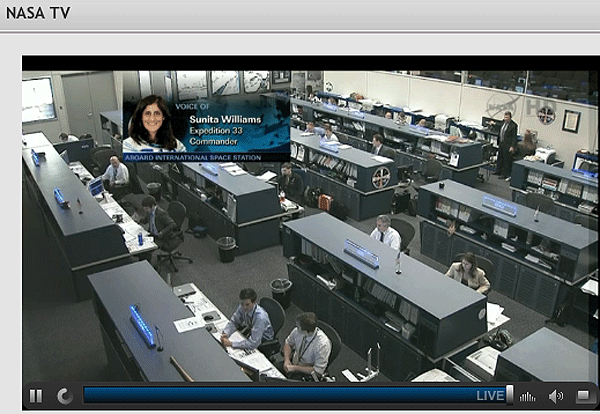
-
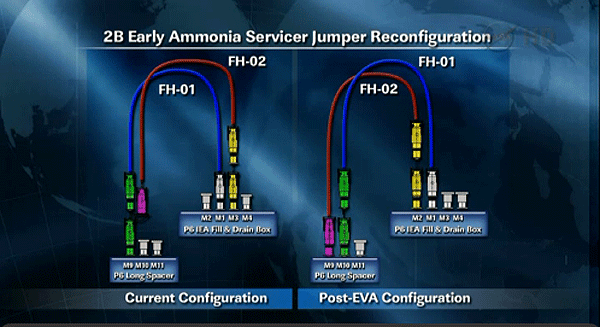

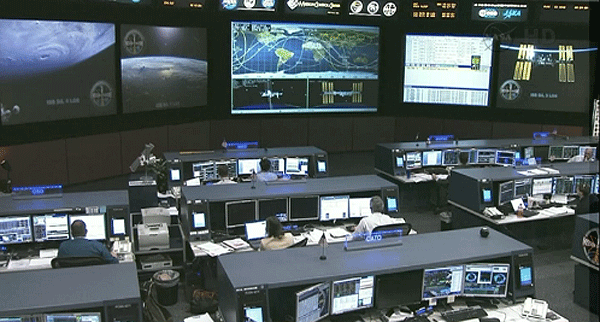
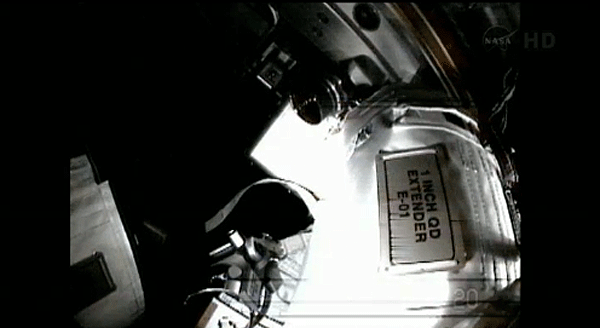
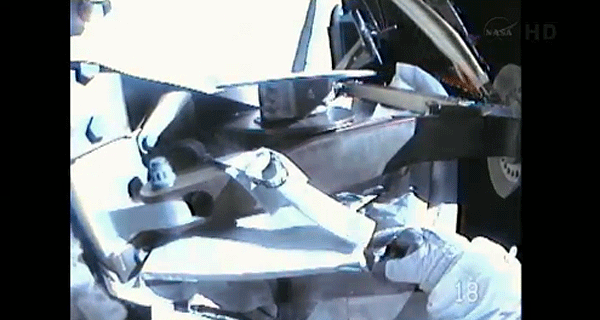
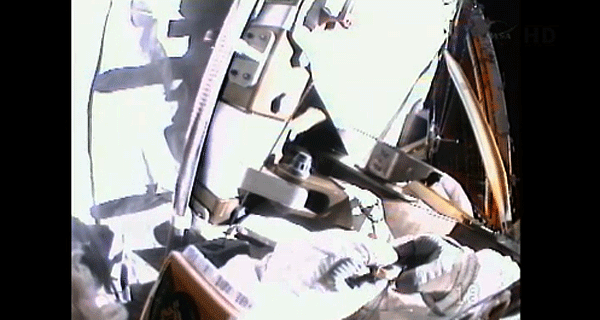
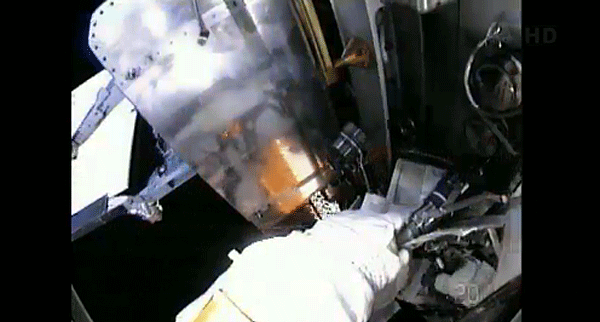
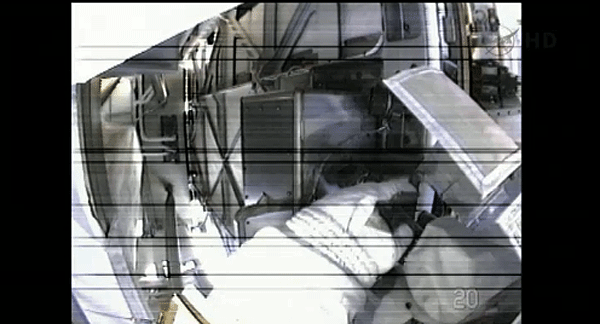
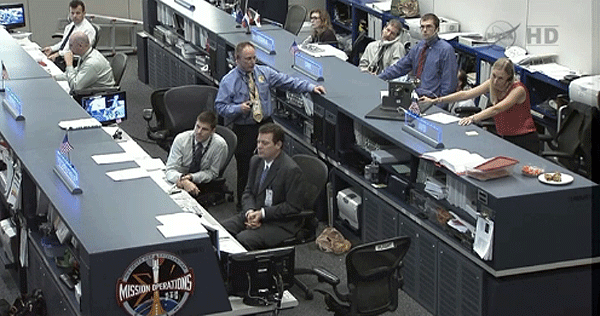
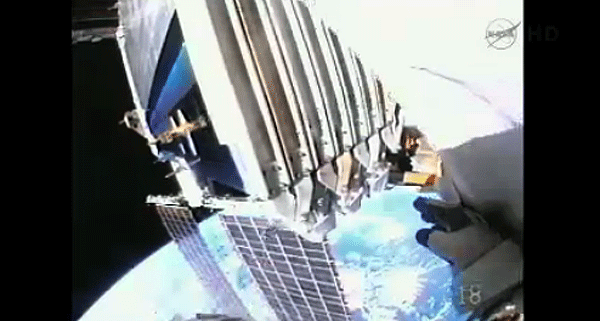
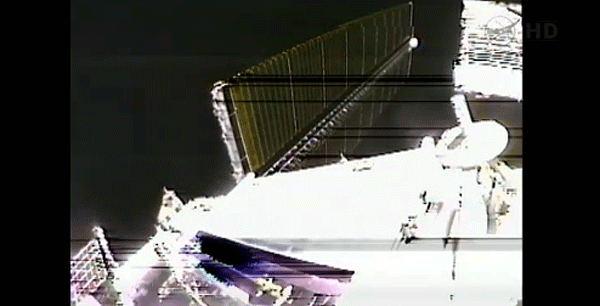
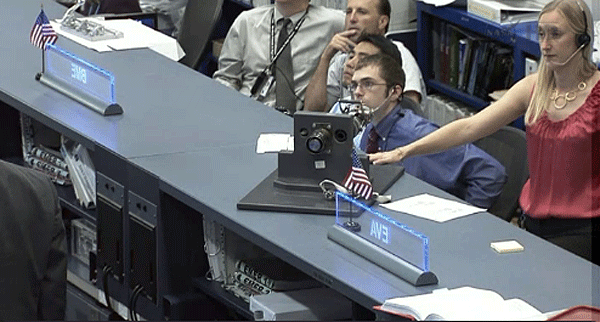
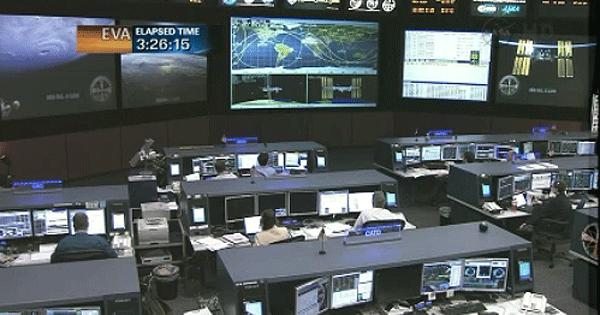
-
Expedition 33 Commander Suni Williams and Flight Engineer Aki Hoshide wrapped up a 6-hour, 38-minute spacewalk at 3:07 p.m. EDT Thursday.
During the spacewalk which began at 8:29 a.m., Williams and Hoshide ventured out to the port side of the International Space Station’s truss to configure the 2B solar array power channel’s photovoltaic thermal control system (PVTCS) to support ground-based troubleshooting of an ammonia leak.
The spacewalking duo isolated the photovoltaic radiator on the P6 truss from the PVTCS, shutting off the flow of ammonia in and out of it and rerouting the ammonia flow through a spare radiator so the PVTCS can continue operation. Over the following weeks and months, flight controllers at Mission Control Houston will monitor telemetry to see if the leak continues.
If rerouting the ammonia through the spare radiator stops the leak, mission managers will evaluate whether to leave the fix as-is or replace the photovoltaic radiator on a future spacewalk. If the leak continues, additional troubleshooting will be required.
Williams now has a total of 50 hours, 40 minutes of spacewalking time over seven spacewalks. Thursday's spacewalk puts her fifth on the all time list of cumulative spacewalking time. She holds the record for total cumulative spacewalk time by a female astronaut. This was the third spacewalk for Hoshide, who now totals 21 hours and 23 minutes. He holds the record for total cumulative spacewalk time by a Japan Aerospace Exploration Agency astronaut.
This was the 166th spacewalk in support of station assembly, totaling 1,049 hours and 1 minute -- the equivalent of 44 days.
Wednesday night, thrusters on the ISS Progress 48 cargo ship at the Pirs Docking Compartment were used to raise the station’s altitude in a debris avoidance maneuver to steer clear of a small fragment of debris from the Iridium 33 satellite. Only one set of thrusters on a single manifold was used to execute the reboost at 7:08 p.m. EDT instead of the planned both sets of thrusters on two manifolds, resulting in a slightly reduced altitude change. The single manifold selection was the result of a software configuration, but the burn lasted 10 minutes in duration and was automatically terminated by thruster cut off limits.
Despite the fact that the maneuver achieved only about 72 percent of the planned altitude change, the goal of maneuvering away from the debris was accomplished and no additional maneuver is required.
The reboost increased the station’s altitude by 0.18 statute miles at apogee and 0.49 statute miles at perigee. The station is now orbiting at an altitude of 261.3 x 252.3 statute miles.
Quelle: NASA
5819 Views
